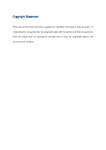AN INVESTIGATION OF THE IMPACTS OF A DAIRY INDUSTRY WASTE ON RIVER WATER QUALITY AND THE APPROPRIATENESS OF CURRENT MONITORING APPROACHES AND REGULATION
| dc.contributor.supervisor | Comber, Sean | |
| dc.contributor.author | Goddard, Rupert | |
| dc.contributor.other | School of Geography, Earth and Environmental Sciences | en_US |
| dc.date.accessioned | 2022-07-29T13:55:13Z | |
| dc.date.available | 2022-07-29T13:55:13Z | |
| dc.date.issued | 2022 | |
| dc.identifier | 912912 | en_US |
| dc.identifier.uri | http://hdl.handle.net/10026.1/19466 | |
| dc.description.abstract |
Rupert Goddard AN INVESTIGATION OF THE IMPACTS OF A DAIRY INDUSTRY WASTE ON RIVER WATER QUALITY AND THE APPROPRIATENESS OF CURRENT MONITORING APPROACHES AND REGULATION. The modern dairy industry is a key contributor to global food security, with diverse production practices reflecting different geographic, economic and cultural contexts. Across the globe, the dairy industry has a significant contribution to global employment and wealth, health and land use. However, untreated or partially treated dairy waste entering a river system can be detrimental, increasing eutrophication, changing community structure or in the worst case scenario, causing death to organisms. Dairies are located near the milk supply, and therefore are in rural locations, potentially near head waters of catchments with limited potential for dilution of wastewater. This project sought to systematically assess the impacts of a dairy on the headwaters of a tributary of the River Tamar in SW England. UK river chemical and ecological quality is regulated through the European Union Water Framework Directive (WFD). Over a two year period, water chemistry, freshwater invertebrates, diatoms and macrophytes were monitored on the River Inny in SW England, upstream and downstream of a significant diary wastewater discharge, to assess the condition of the river and compared with twenty years of historic water quality data. Sample sites were of three types: impacted by dairy waste, not impacted or possibly impacted. To support the study design, laboratory based ecotoxicological experiments were undertaken, to determine the toxicity of potassium, sodium and chloride, owing to their elevated concentrations within the dairy discharge and lack of existing data. Water chemistry was determined using Inductively Coupled Plasma Mass Spectrometry (ICP-MS), Optical Emission Spectrometry (ICP-OES) and Ion chromatography, and compared with Environmental Quality Standards (EQS) and historic data. The status of the river biota was determined using existing methods adopted by the regulator and modelled using standard metrics and compared against historic data for diatoms, invertebrates and macrophytes. Of the current elements in the discharge permit (phosphate and iron), only phosphate showed a marginal exceedance downstream at the end of the mixing zone (Trewinnow Bridge site), a significant improvement over historical impacts the discharge had on the receiving water, reflecting continuous upgrading of the waste treatment. This study, however, highlighted the major ions without WFD EQS (potassium, sodium and chloride) present in the dairy discharge at elevated concentrations, may impact on sensitive invertebrates such as Gammarus, immediately downstream of the discharge within the mixing zone, which would benefit from further investigation. By combining water quality, ecotoxicological and ecological assessments, this study has shown that recent improvements in the wastewater treatment engineering process has contributed to ‘Good’ overall ecological status within the receiving water for the first time, with little, if any, deterioration in water and ecological quality caused by the effluent discharge. The research demonstrated the benefits of assessing water quality using soluble reactive phosphorus (i.e. bioavailable) rather than just reactive phosphorus that is currently the case, and illustration is made of the link between diatom status and Soluble reactive versus Total reactive phosphorus. Novel ecotoxicological data suggests possible impacts from potassium directly downstream of the discharge within the mixing zone to the invertebrate, Gammarus. By combining biological and chemical monitoring and modelling, along with providing additional toxicological data for major ions, this study provides a significant step forward in terms of understanding and better regulating dairy industry wastewater discharges. | en_US |
| dc.description.sponsorship | Saputo Dairy (UK) | en_US |
| dc.language.iso | en | |
| dc.publisher | University of Plymouth | |
| dc.rights | Attribution-NonCommercial-ShareAlike 3.0 United States | * |
| dc.rights.uri | http://creativecommons.org/licenses/by-nc-sa/3.0/us/ | * |
| dc.subject | Water chemistry | en_US |
| dc.subject | Dairy waste | en_US |
| dc.subject | Freshwater ecology | en_US |
| dc.subject | EQS modelling | en_US |
| dc.subject | Ecotoxicology | en_US |
| dc.subject.classification | PhD | en_US |
| dc.title | AN INVESTIGATION OF THE IMPACTS OF A DAIRY INDUSTRY WASTE ON RIVER WATER QUALITY AND THE APPROPRIATENESS OF CURRENT MONITORING APPROACHES AND REGULATION | en_US |
| dc.type | Thesis | |
| plymouth.version | publishable | en_US |
| dc.identifier.doi | http://dx.doi.org/10.24382/1253 | |
| dc.rights.embargoperiod | No embargo | en_US |
| dc.type.qualification | Doctorate | en_US |
| rioxxterms.version | NA | |
| plymouth.orcid_id | https://orcid.org/ 0000-0001-6834-3235 | en_US |
Files in this item
This item appears in the following Collection(s)
-
01 Research Theses Main Collection
Research Theses Main



